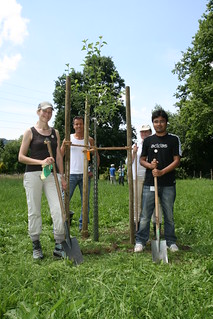
Thomas Watson Jr, CEO of IBM, at the opening of the
Rüschlikon lab on May 22, 1963.
 |
| From left to right, AP Speiser, lab director and Thomas Watson Jr, CEO of IBM, at the opening of the Rüschlikon lab on May 22, 1963. |
 |
| Original invitation to the opening in 1963. |
 |
| Scientists at the Zurich Lab planted trees in Rueschlikon in 2011. |
Labels: IBM Research - Zurich, Speiser, watson